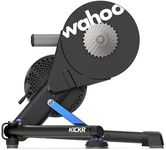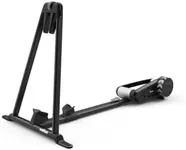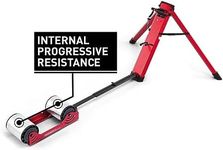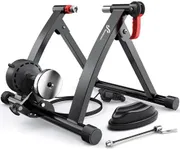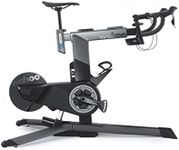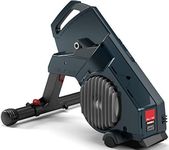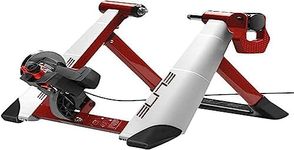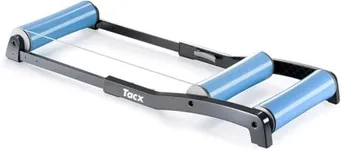Buying Guide for the Best Indoor Bike Trainer
Choosing the right indoor bike trainer can significantly enhance your cycling experience, especially when outdoor conditions are not favorable. The right trainer will help you maintain your fitness, improve your cycling skills, and provide a realistic riding experience. To make an informed decision, it's important to understand the key specifications and how they align with your needs and preferences.Resistance TypeResistance type determines how the trainer simulates the resistance you feel when cycling outdoors. There are several types: fluid, magnetic, direct-drive, and wind. Fluid trainers offer a smooth and progressive resistance, making them feel more like road cycling. Magnetic trainers provide adjustable resistance levels, which can be manually controlled. Direct-drive trainers are the most advanced, offering precise resistance control and a quieter ride. Wind trainers are the simplest and least expensive, but they can be noisy. Choose a resistance type based on your need for realism, noise level, and budget.
CompatibilityCompatibility refers to whether the trainer can accommodate your bike's wheel size and axle type. Most trainers are designed to fit a range of wheel sizes, typically from 26 to 29 inches, and different axle types like quick-release or thru-axle. Ensure the trainer you choose is compatible with your bike to avoid any fitting issues. If you have multiple bikes or plan to upgrade, consider a trainer with broader compatibility.
ConnectivityConnectivity is about how the trainer interacts with apps and devices. Smart trainers can connect to cycling apps like Zwift, TrainerRoad, and others via Bluetooth or ANT+. This connectivity allows for interactive training sessions, virtual rides, and performance tracking. If you enjoy structured workouts and virtual rides, a smart trainer with good connectivity is essential. For those who prefer a simpler setup, a basic trainer without connectivity might suffice.
Noise LevelNoise level is an important consideration, especially if you live in an apartment or train early in the morning. Fluid and direct-drive trainers are generally quieter, while wind trainers can be quite loud. Magnetic trainers fall somewhere in between. Consider your living situation and the time of day you plan to train when evaluating noise levels. A quieter trainer will be less disruptive to others around you.
Stability and Build QualityStability and build quality affect the trainer's durability and how secure you feel while riding. A stable trainer will have a wide base and sturdy construction, preventing it from tipping over during intense workouts. Higher build quality often means better materials and longer lifespan. If you plan to do high-intensity training or sprints, prioritize stability and build quality to ensure safety and longevity.
Ease of Setup and StorageEase of setup and storage is about how quickly you can get the trainer ready for use and how easy it is to store when not in use. Some trainers are foldable and lightweight, making them easy to store in small spaces. Others might require more time and effort to set up. If you have limited space or need to frequently move the trainer, look for models that are easy to set up and store.

